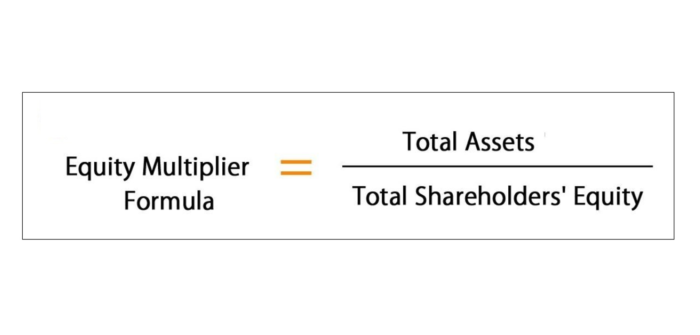
After posting the above entries, all the nominal accounts would zero-out, hence the term “closing entries”. Here are a few key differences between the adjusted trial balance and closing-trial balance. It is important to note that the closing balance of all accounts should reflect zero net balance for all debit and all credit accounts post-closing trial balance definition at the closing day. Balance sheet accounts include Cash accounts, Marketable Securities, Accounts Receivable, Inventory, Fixed Assets, Prepaid Expenses, and Intangible Assets. Liabilities include Accounts Payable, Accrued Liabilities, Short-term Portion of Notes Payable, Notes Payable-Long Term, and Deferred Revenues.
However, there still could be mistakes or errors in the accounting systems. A trial balance can be used to assess the financial position of a company between full annual audits. While a post-closing trial balance and an adjusted trial balance both serve as important financial reports for a company, their purpose and content differ. Since there are several types of errors that trial balances fail to uncover, each closing entry must be journalized and posted carefully.
Does the Post-Closing Trial Balance Need to be Equal?
Like other trial balances, the post-closing trial balance doesn’t list the accounts with zero balances. It will only include general ledger balance sheet accounts with balances other than zero. The purpose of a post-closing trial balance is to check debits and credits after the closing entries have been made.

Instead, they are accounting department documents that are not distributed. Here is an example of an adjusted trial balance with adjusting entries. Adjusted trial balance is an advanced form of the commonly used trial balance statement.
Adjusted Trial Balance Vs Post-Closing Trial Balance: Similarities and Differences
Post-closing trial balances are used to verify whether the debit balance total is equal to the credit balance total. Preparing the post-closing trial balance is an important part of the accounting cycle. The process of creating the post-closing trial balance is completed after entry closing and prepares the accounts for the next period. Temporary accounts like revenues, expenses, and distributions have to be closed at the end of each accounting period to permanent accounts like assets, liabilities, and equity.
Shareholders’ Equity Accounts in the balance sheet include Retained Earnings, Paid-In Capital, Treasury Stock, and Accumulated Other Comprehensive Income (Loss). Secondly, it can be used to verify the accuracy of financial statements, which is crucial for investors and other stakeholders in making informed decisions. It is also a non-formal statement that does not form a part of the formal financial statements of a business. Accelerate your company’s accounting close by using automated batch payment reconciliation in Tipalti AP automation software. Read the white paper to learn more about holistic AP automation in accounting.
Example of Post-closing Trial Balance
When accounting software is used, the totals should always be identical. It also helps an accountant to reconcile all journal entries that belong to one accounting cycle (current) only. Journal entries for transactions taking place after the closing date should be removed and carried forward to the next accounting period.
- Both serve the accountants to prepare the pre-requisite for the preparation of financial statements.
- The post closing trial balance is a list of all accounts and their balances after the closing entries have been journalized and posted to the ledger.
- The debit and credit amount columns will be summed and the totals should be identical.
- Secondly, it can be used to verify the accuracy of financial statements, which is crucial for investors and other stakeholders in making informed decisions.
- This is the initial version that an accountant uses when preparing to close the books at the end of the month.
- Here are a few key differences between the adjusted trial balance and closing-trial balance.
Trial balance worksheets contain columns for income statements and balance sheet entries. This makes certain the next accounting cycle’s beginning balances are accurate. At the end of an accounting period, the accounts of asset, expense, or loss should each have a debit balance, and the accounts of liability, equity, revenue, or gain should each have a credit balance. On a trial balance worksheet, all of the debit balances form the left column, and all of the credit balances form the right column, with the account titles placed to the far left of the two columns. Posting accounts to the post closing trial balance follows the exact same procedures as preparing the other trial balances. Each account balance is transferred from the ledger accounts to the trial balance.
The debit and credit amount columns will be summed and the totals should be identical. Post-closing trial balance – This is prepared after closing entries are made. Its purpose is to test the equality between debits and credits after closing entries are prepared and posted. The post-closing trial balance contains real accounts only since all nominal accounts have already been closed at this stage.

Depending on the kinds of business transactions that have occurred, accounts in the ledgers could have been debited or credited during a given accounting period before they are used in a trial balance worksheet. Furthermore, some accounts may have been used to record multiple business transactions. As a result, the ending balance of each ledger account as shown in the trial balance worksheet is the sum of all debits and credits that have been entered to that account based on all related business transactions. It provides a snapshot of the company’s financial position at the end of the accounting period after all temporary accounts have been closed and their balances have been transferred to permanent accounts. In other words, a post-closing trial balance only includes permanent accounts, such as assets, liabilities, and equity accounts, which are not closed at the end of the accounting period. Since temporary accounts are already closed at this point, the post-closing trial balance will not include income, expense, and withdrawal accounts.

Leave A Comment